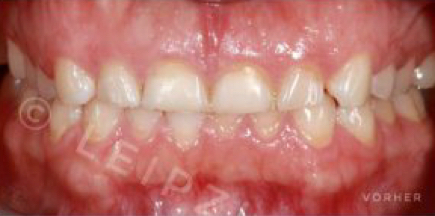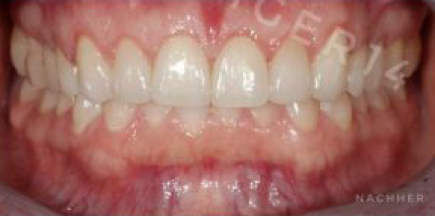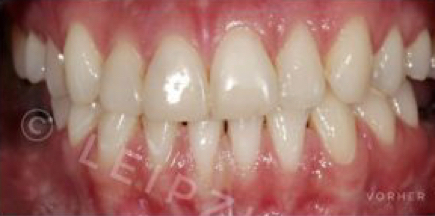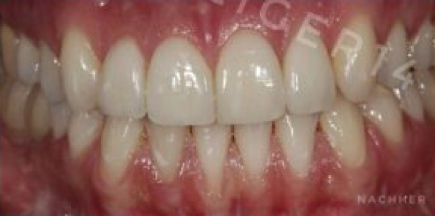Veneers
Quality meets perfect aesthetics
Before and after effects
We will be happy to assist you with our expertise and advise you in detail in advance to give you the perfect smile afterwards!
Small change, amazing effect!
Nowadays, beautiful teeth are a decisive factor for success at work and in private life. Our visual appearance has a major influence on how we appear to others and how we are perceived. Last but not least, our appearance influences our own demeanour. If we feel comfortable in our body and with our teeth, we can radiate this and appear attractive and self-confident to others. A charming smile creates closeness and is infectious. Many people now wish for an “invisible” restoration of aesthetically imperfect teeth. This is no longer the preserve of film and television stars. “Veneers offer the opportunity to improve the appearance of teeth gently and permanently, while at the same time preserving your own teeth and coming as close as possible to the ideal of beauty.
Our specialists attach great importance to minimally invasive treatment wherever possible, i.e. treating the teeth gently and preserving them. Veneers are very often chosen for this.
What are Veneers?
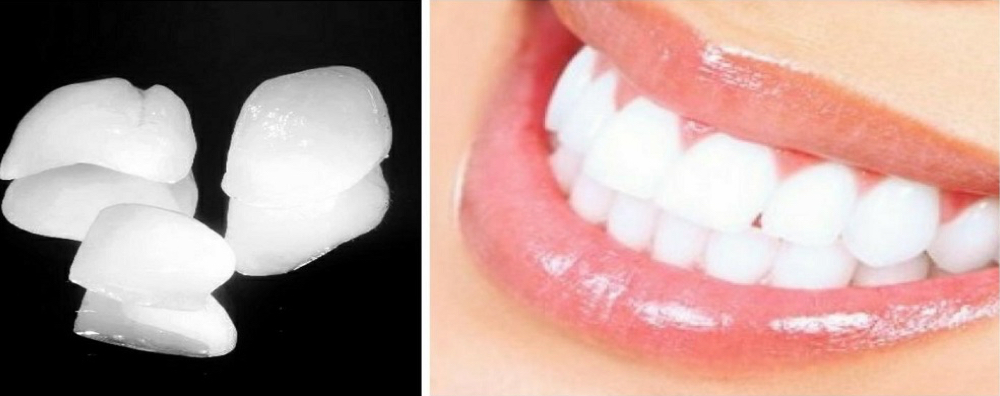
Types of veneers
In dentistry, we differentiate between 4 types of veneers according to indicators such as thickness, material and application:
Conventional veneers
(up to 1 millimetre thick)
This type is made entirely of ceramic and is customised to the tooth shape in the laboratory. Only minimal removal of the tooth structure is necessary when preparing the tooth. With conventional veneers, it is also possible to cover discoloured teeth very well and thus lighten the tooth colour according to your wishes. This type of veneer can be used to treat larger misaligned teeth and defects.
Non-prep veneers
(at only about 0.3 millimetres, much thinner than conventional veneers) – representatives are the “Lumineers”
With this variant, the tooth structure is not affected, as prior preparation of the tooth is not necessary. Due to the low thickness of this type of veneer, it is only possible to influence the tooth colour to a limited extent and a discoloured tooth that is to be veneered could shine through. Small gaps and misaligned teeth can be treated with non-prep veneers.
Veneers-to-Go
(Sofort-Veneers)
They can be attached to the tooth with little or no removal of hard tissue. However, as the panels are already prefabricated, the colour and shape cannot be optimally adapted.
Composite veneers
In consultation with you, we clarify in advance exactly what aesthetic requirements you have for your new smile in order to then select the right type of veneer according to further criteria.
When do we recommend veneers?
- for minor positional and/or shape defects of the teeth
- for smaller tooth gaps
- for chipped edges
- for rough, irregular tooth surfaces
- for root canal-treated anterior teeth with colour deviations
- for defective fillings or minor fractures
- For discoloured teeth that do not respond sufficiently to bleaching
When do we advise against it?
- for anterior teeth stressed by heavy grinding
- in the presence of large fillings or large defects in the tooth (more than 2/3 of the tooth structure affected)
- with insufficient oral hygiene
- For major tooth position corrections (clarify an orthodontic correction in advance)
- In case of unsightly gum line (prior correction may be necessary)
Advantages of veneers
- Gentle, dental method that enables outstanding aesthetics with maximum protection of the tooth substance
- Very safe procedure with fewer treatment complications than with a full crown preparation
- the transparency of the veneers favours a natural appearance
- best tissue compatibility
- Low plaque build-up on the ceramic surface
- Colour stability and gloss retention
- Very good mechanical properties
Disadvantages of veneers
- Aesthetic optimisation of the teeth is only possible if the dentist and dental technician have the appropriate expertise
- For larger defects, a crown restoration is recommended due to the lower stability of veneers
- Preparation of the tooth results in a low risk of chronic pulpitis (inflammation of the pulp)
- Loss of tooth structure, even if minor, cannot be reversed – the treated tooth region will always be dependent on a veneer or crown restoration in the future (exception: non-prep veneer and Lumineer)
Consultancy/planning phase & mock-up


In the in-house laboratory, the dental technician then transfers the mould of the teeth obtained from the initial wax model onto temporary plastic shells, which are fitted onto the existing teeth. These “demo veneers” are then perfectly adjusted according to your wishes before the teeth are processed for the final restoration. This preliminary transfer in the patient’s mouth is called a “mock-up”.
Conclusion: Nowadays, a “preview” using a mock-up is indispensable for the fabrication of high-quality dentures. This will give you a feel for your future dentures in terms of their aesthetics and functionality.
How is a veneer attached to the tooth?
1. preparation of the teeth
Firstly, the teeth are thoroughly cleaned, if necessary. older fillings are renewed and any existing caries is treated. Care must be taken to ensure holistic oral health before veneers can be used.
This is followed by preparation of the enamel, whereby the dentist removes between 0.3 and 1 mm of the tooth structure – this corresponds to approx. 5-10% of the total tooth structure. The preparation of the tooth prevents the tooth from looking unnatural when the veneer is attached.
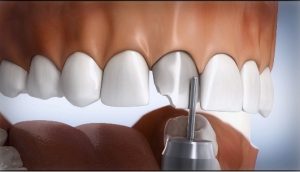
Preparation of the enamel
For comparison: When preparing ceramic veneered crowns, approx. 30-60% of the total tooth structure is ground away.
2. impression and fabrication of the veneers
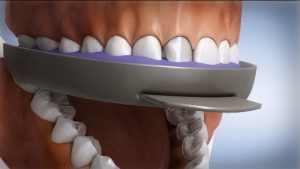
Impression of the prepared tooth situation
The technical effort required to achieve an optimal natural shape and colour is very high and requires comprehensive dental expertise. The dental technician becomes an artist who has to translate the patient’s wishes into an aesthetically perfect work.
During the fabrication period – usually one to two weeks – our patients wear high-quality temporary veneers, which are already very similar to the definitive ceramic veneers. This means that you do not have to accept any aesthetic losses and can enjoy your new smile in advance.
3. mounting
After conditioning the ceramic veneer and the tooth with a colour-matched resin, it is attached to the prepared tooth using a special adhesive (so-called two-component adhesive) in a time-consuming process (30 minutes per tooth).
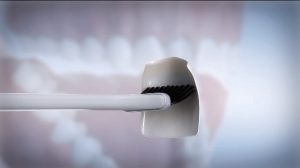
Applying the special adhesive
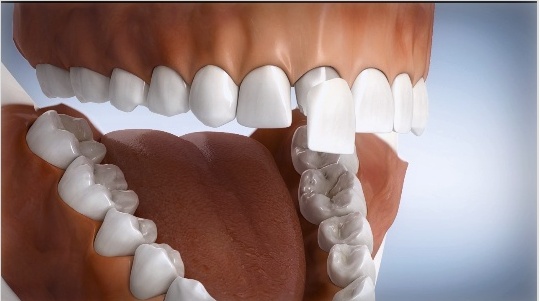
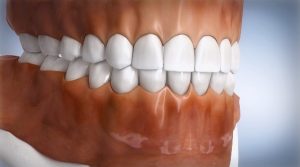
Applying the veneer
The thickness of the veneers used, the patient’s tooth colour and the colour of the special adhesive ultimately determine the final shade of the veneer. With two-component adhesives, however, the final colour only becomes visible after curing. This is remedied by so-called “try-in” pastes, which can be used to determine the optimum aesthetic shade before the veneers are finally applied.
What costs do you have to expect and will they be covered?
Since in most cases this is a cosmetic enhancement that you order yourself and the use of veneers is not a medical necessity in such cases, health insurance companies do not contribute to the costs incurred. Even if there is a medical necessity, you should clarify the possible assumption of costs in advance.
If you have private insurance and there is a medical necessity or justifiable treatment, the insurance company is generally obliged to reimburse the costs. In each case, however, we advise you to consult us and the insurance company in advance.
Durability of veneers
According to current findings, the durability of veneers is in no way inferior to that of normal crowns. The covers have a very high durability. With good dental care, regular check-ups at the dentist and dental cleanings, an optimally designed veneer can last for 15 years or more.
Not least due to the outstanding material properties of modern ceramics in combination with the extremely durable adhesive bond, veneers are particularly long-lasting, even when processed very thinly, and even stabilise weakened teeth.
The German Society of Dentistry, Oral and Maxillofacial Medicine (DGZMK) recognised the veneer restoration as a scientifically recognised definitive restoration method that combines aesthetics and function.
Patient OPINIONS
Great doctor
Thorough diagnosis; honest recommendation not to carry out the planned special treatment in my case, thus saving me unnecessary treatment costs.
Friendly and competent
I felt safe and in good hands from the very first moment. Dr Planert took the time to answer my questions and explained everything clearly.
Outstanding!
I am completely satisfied! Very courteous reception... Advice and treatment at a very high level. Can recommend Leipziger14-Ihre Zahnärzte and Mr Planert with a clear conscience!"
Great doctor
Thorough diagnosis; honest recommendation not to carry out the planned special treatment in my case, thus saving me unnecessary treatment costs.
Outstanding!
I am completely satisfied! Very courteous reception... Advice and treatment at a very high level. Can recommend Leipziger14-Ihre Zahnärzte and Mr Planert with a clear conscience!"
Friendly and competent
I felt safe and in good hands from the very first moment. Dr Planert took the time to answer my questions and explained everything clearly.
